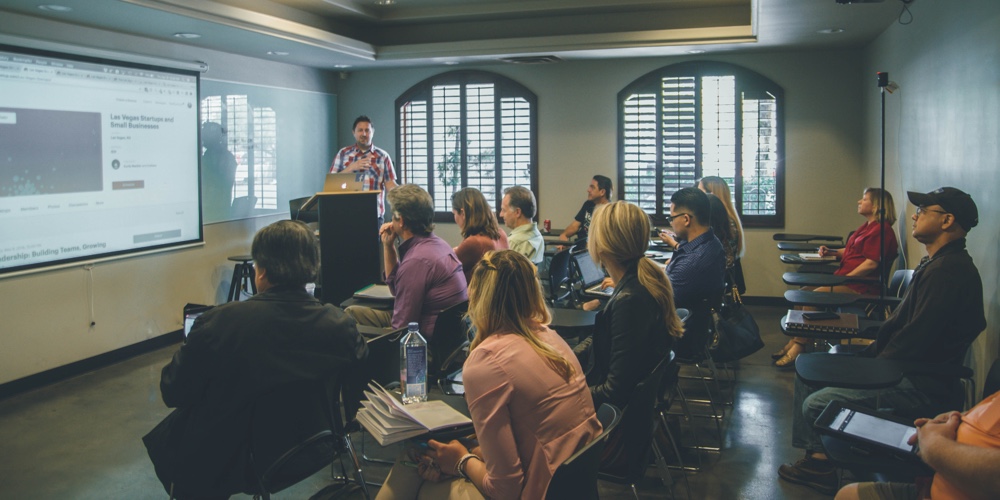The workplace is rapidly changing from both an employer and employee perspective, especially as it relates to securing and retaining our top talent. With that, Learning and Development is rapidly adjusting to the new needs of the business world and the infusion of a learning culture into the organization is one of those needs. Take a moment to think about the following before you dive further.
Do you feel that you have a learning culture within your organization? How can you tell?
When was the last time you examined your current training programs?
In studying more about infusing a Learning Culture into organizations, finding the right sources of information is critical. The Association of Talent Development published research on Building a Culture of Learning, which they define as “A culture of learning, or learning culture, is one in which employees continuously seek, share, and apply new knowledge and skills to improve individual and organizational performance. The importance of the pursuit and application of learning is expressed in organizational values and permeates all aspects of organizational life.” (ATD, 2016). Other definitions included terms such as “open mindsets” and “growth mindsets”.
It would be against all adult learning theories if I didn’t elaborate on WHY this is important. The argument of having a learning culture within an organization is not a new concept but can be easily lost when other initiatives or shifts, whether internal or external, take place. Many times, the barriers we provide ourselves for not continuing our education, can be the same barriers organizations face, such as lack of time, money, or motivation.
I want to first touch onto the idea of a “growth mindset”. If you haven’t interacted with the work done by Stanford Psychologist, Dr. Carol Dweck, it changed how I viewed my development and career path. All it took was actively practicing small shifts in how I talked to myself and others. Her research can also give us insight on how to create this mindset on the organizational level. This requires that all level of employees actively participate in ways to improve and grow. The buy-in is key and infusion into the culture is how you work to overcome the barriers.
Let’s break this down a bit further.
Hiring
An issue we have heard many are facing is onboarding. It’s no secret that the industry is short staffed across the board, but if we sacrifice bringing in the wrong talent because we are not asking the right questions and focusing more heavily on the technical skills instead of uncovering a strong desire to learn and putting effort into the position, then it will continue to be difficult to retain employees.
Are the technical skills important? Absolutely! But in a world that is rapidly improving its Artificial Intelligence capabilities, the human skills become increasingly valuable. By human skills, I mean empathy, communication, self-awareness. The list goes on, but these skills are the ones that truly create inclusive environments filled with critical thinkers.
It’s important to also remember that not all experience is the same. Don’t lose out on someone who could innovate and grow with your company because you can’t look past the individual not having a formal education and/or 10+ years of experience.
Along with ensuring that your interview process is consistent, it should be behavioral based which helps uncover some, not all, of the traits you are looking for. The individuals who are interviewing should be trained on how to do so effectively and provide sufficient feedback on the applicant. For a learning culture, an article published by SHRM suggests looking for people who are driven, can anticipate needs and possible outcomes, and are willing to take some risks when given the opportunity.
Training for Now and the Future
Your training program is as important to the culture of the organization as hiring the right people especially in retaining the talent you have. Should training be centralized or decentralized? What are the advantages and disadvantages of either structure? I will leave the full breakdown of the benefits and disadvantages of either for another day and instead skip straight to what organizational studies tell us; a hybrid structure has the potential to maximize growth and truly encompasses what a learning culture should look like. Training programs should be both structured but responsive especially as we continue to advance into technology.
On top of being structured and responsive, they should be engaging. It should not only train the technical skills but offer an infusion of those human skills I mentioned earlier.
Here are some other considerations to ensure a strong training program to support a learning culture:
- Create a cohort of on the job (OJT) trainers supporting the trainer’s message in the field. This requires identifying people and training people who have a growth mindset and are willing to share their knowledge in a constructive way. They should be open to learning from new hires, as we all know processes and policies change. The “we have always done it this way” mindset does not contribute to learning cultures.
- Ongoing training is key at ALL levels. The individuals identified as OJT trainers, should be able to communicate their department needs from a training perspective and work collaboratively with L&D. Then, bring people back in for refreshers and focus on key skills that help drive growth now and into the future both for frontline and back-office.
- Think outside of the box for how to train employees. Trainings can be in the form of in-person classes or workshops, 10 to 15 minute virtual sessions, e-learnings, or even as simple as a worksheet. You can make it fun and even competitive.
- A leadership development program is key. It needs to be accessible to all levels of leaders, including those that are aspiring or in the pipeline. With that, it needs to be intentionally designed for the organization which requires communication with your potential leaders. Determining the true human skills that need to be developed further will assist with filling the bench. Developing leaders to develop their teams and encouraging individual growth will make an impact.
- Don’t forget to EVALUATE! You do not need the best technology to evaluate and track the progress of employees to provide the ROI of your programs. Move past the surface level survey and dig into what the data is telling you related to growth within business units and employee retention.
Learning Plans at All Levels
Having a learning plan in place helps foster the employee’s growth mindset while also assisting with budget planning (win, win!). They tend to have a sense of ownership over their learning, while also increasing their loyalty to the organization. Most adult learners need to know what is in it for them, so in the process of creating the learning plan it is also important to set realistic goals for growth.
Not all learning has to be internal or expensive! Think outside of the box and find podcasts, books, white papers, and free resources online to add to the plan. However, conferences, workshops, and seminars are incredible learning opportunities that also provide networking with peers outside of the organization. These are not just reserved for C-Suite and the board, send the people that are in your pipeline so they can benefit from the experience as well.
Then, to determine if the learning is making an impact organizationally, have employees report back on the conference or workshop they attended in a formalized document. Better yet set up a “think tank” style meeting allowing them to infuse what they learned into an improvement for the organization.
Small Shifts You Can Do Today
My hope is that you take a moment to truly examine the answers to the questions posed in the beginning. A learning culture is what will set the organization apart from the others in the industry- but it takes effort. I also want to acknowledge that creating an entire training program or revising current curriculum is not always feasible in the short term, so here are some actions you can do today.
- Give every employee a path for the future. Learning plans or Individual Development Plans can be created by the employee. Simply sharing free resources, such as podcasts that provide useful information, helps get the mind moving towards the future. Be intentional about learning!
- Allow for ALL employees at all levels to have a seat at the table. The inspiration that comes from engaging minds that have differing views and have learned something new and exciting could create the next big opportunity for growth. Create space for structured risk-taking and failing forward through communication.
One of the most impactful things I have enjoyed with my organization is coffee chats with our CEO. She provides us updates, tells us what she is reading, listening to, and even further- what is in her heart. You want to instill a growth mindset in your employees? Have the CEO practice and encourage continued education- that's true buy-in!







